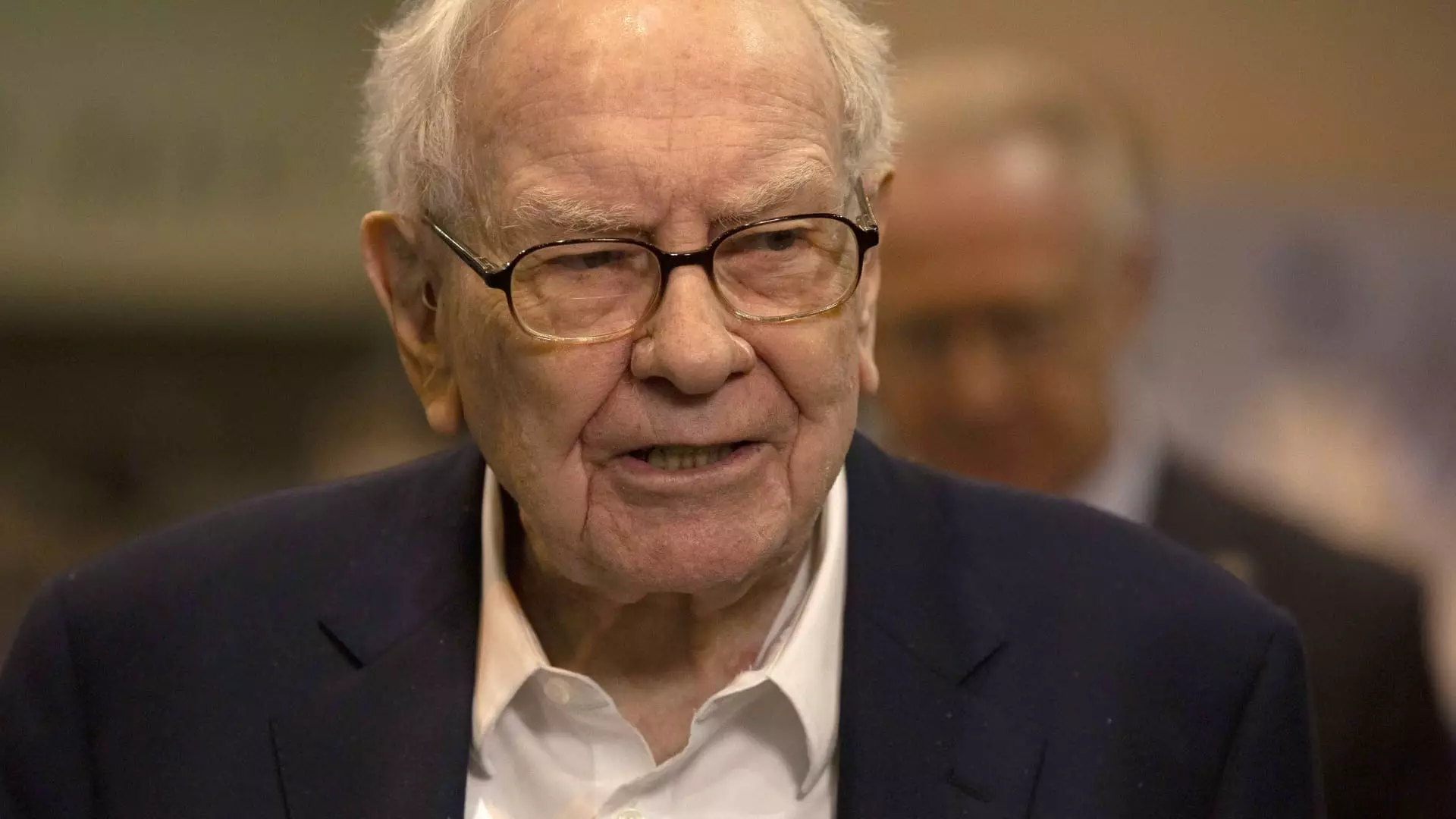Berkshire Hathaway, led by the esteemed investor Warren Buffett, has reached an unprecedented milestone in its financial strategy, amassing cash reserves that exceeded a staggering $325 billion in the third quarter of the year. This marks an increase from $276.9 billion recorded in the previous quarter, signaling an aggressive liquid asset accumulation approach amidst fluctuating market conditions. The question arises: what does this relentless cash collection represent for the conglomerate’s overall investment strategy and future outlook?
Berkshire Hathaway’s cash reserves can be viewed both as a protective strategy and a provocative stance in the market. As Buffett continues to sell significant equity holdings, primarily in well-known stocks like Apple and Bank of America, the ongoing stock-selling spree raises critical questions about the current investment climate and economic signals. Selling these high-profile stocks is not merely a reaction to market conditions; it reflects a strategic pivot in response to evolving market fundamentals that Buffett perceives as critical.
The decision to liquidate approximately 25% of its Apple stake marks the fourth consecutive quarter of this trend, emphasizing a consistent strategy of rebalancing within the company’s equity portfolio. Such drastic moves suggest Buffett’s evaluation of future growth potential versus current valuations. By retracting some of its positions in these tech giants, Buffett may be anticipating possible challenges facing these stocks, such as regulatory risks, increased competition, or market saturation.
In tandem with this divestment strategy, the sale of a notable portion of Bank of America further reinforces the impression that Berkshire is prioritizing cash liquidity, possibly in anticipation of developing better investment opportunities. The fact that Berkshire Hathaway offloaded over $10 billion worth of Bank of America shares since mid-July only adds to the narrative of a cautious, yet opportunistic, investment philosophy.
The Absence of Share Buybacks
Interestingly, amid this selling trend, Berkshire Hathaway refrained from repurchasing its own shares entirely during the last quarter. This stark departure from earlier activity, where the company had executed nearly $2 billion in buybacks, paints a picture of a more conservative Buffett, possibly indicating a belief that current market prices do not reflect the intrinsic value of the company. This hesitation raises pertinent discussions about when and why such repurchases occur and how dysfunctional valuations can lead to a reluctance to reinvest internally.
Berkshire’s operational earnings have also exhibited a decline, totaling $10.1 billion in the third quarter, down about 6% year-over-year. This decrease, primarily attributed to lacklustre insurance underwriting results, underscores the complexities faced by the conglomerate, illustrating that an expansive cash reserve does not equate to operational strength or market dominance.
As the stock market experiences a notable upward trend—spurred by expectations of a safeguarding economic environment, decreasing inflation, and evolving monetary policies—Buffett’s approach seems counterintuitive. The increase in interest rates could foreshadow shifts in investment sentiment, which leaves many questioning the sustainability of such market exuberance. Prominent investors express concerns about potential fiscal deficits and the lack of decisive action from political candidates regarding fiscal responsibility.
Despite this uncertainty, Berkshire Hathaway’s stock performance outpaced the S&P 500, gaining 25% year-to-date, a testament to its robust operational foundation and Buffett’s illustrious investing acumen. However, the overarching question remains: at what point does this view of conservatism become counterproductive? If Buffett’s strategy is rooted in the anticipation of future tax implications—such as a possible increase in capital gains tax—the efficient allocation of capital becomes even more critical.
In reflection, Berkshire Hathaway’s soaring cash reserves amidst a wave of stock liquidations evokes a dual narrative of caution and strategy. While Buffett’s decisions can be understood as protective maneuvers against uncertain economic variables, they also hint at a thorough reassessment of market realities. The underlying analysis suggests that as Buffett maneuvers through this complex landscape, his ultimate goals will pivot on optimizing value creation while navigating an increasingly volatile financial environment. As stakeholders look to the horizon, the unfolding developments at Berkshire Hathaway firmly underscore the ongoing balancing act required in investment strategy—one rife with both opportunity and risk.

